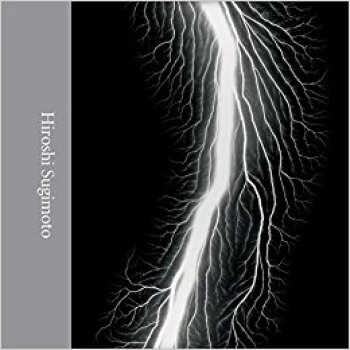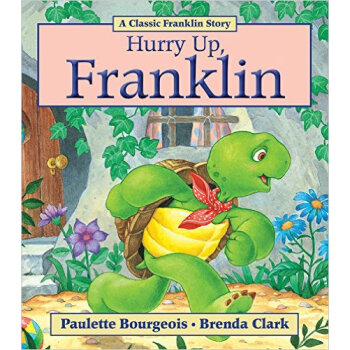![Zoom [精裝] [3歲及以上]](https://pic.windowsfront.com/19142173/eb7d0057-fde6-4e25-9418-ea31e53ea1a0.jpg)

具體描述
內容簡介
A la manera de Las mil y una noches, en donde un cuento se inserta en otro cuento, Istvan Banyai convierte la imagen en un relato en el que todo puede suceder y prolongar a límites infinitos el placer de mirar y descubrir. Cada vuelta de página implica una sorpresa, cada página es una historia que no se acaba. A wordless picture book presents a series of scenes, each one from farther away, showing, for example, a girl playing with toys which is actually a picture on a magazine cover, which is part of a sign on a bus, and so on.作者簡介
Istvan Banyai is a commercial illustrator and animator as well as the author/illustrator of Zoom (Viking and Puffin) and REM (Viking). He lives in New York City.精彩書評
Publishers Weekly "Readers are in for a perpetually surprising-and even philosophical-adventure," said PW in a starred review of this wordless picture book that begins with a close-up of a rooster's comb and ends in outer space. Ages 5-up. (July) Publishers Weekly This provocative wordless volume can be ``read'' either from front to back or even from back to front. Either way, it's a startling experience. Its illustrations ``zoom'' out, as though a viewer has rapidly backed away from each. For example, the first painting, of a jagged-edged red shape, turns out to be a detail of a rooster's comb; as the pages turn, the bird diminishes in importance, until the barn where he stands is shown to be a toy on a magazine's cover. That magazine dangles from the hand of a dozing boy, who himself becomes but a smudge on an advertising billboard. These shifts in perspective repeat until the book abandons earth altogether. The last image is a tiny white sphere-our planet-against a night sky. The bold color and level of detail in Banyai's cartoons recall ``Prince Valiant'' or another of the ``realistic'' Sunday comics. If the concept is not wholly new, the execution is superior. Readers are in for a perpetually surprising-and even philosophical-adventure. All ages. (Mar.) Fewer Reviews School Library Journal PreS-Gr 3-This wordless picture book re-creates the effect of a camera lens zooming out. For example, one illustration shows a boy on a cruise ship, the next shows him from a distance, and the next reveals the whole ship. Finally, the viewpoint moves back farther and it turns out that the ship is actually a poster on a bus. The perspective continues to recede, revealing the bus as an image on a television screen. Three pages later, viewers see that the person watching TV is drawn on a postage stamp. The final picture shows a view of Earth from space. To heighten the effect, all of the full-color illustrations appear on the recto, while each verso is completely black. It's fun to watch the transition in perceptions as a farm becomes a toy, the girl playing with it is on a magazine cover, etc. The novelty soon wears off, however, and nothing else about the book is memorable. The paintings themselves are not particularly interesting and would not stand alone well. David Wiesner's Free Fall (Lothrop, 1988), David Macaulay's Black and White (Houghton, 1990), and Ann Jonas's Reflections (Greenwillow, 1987) use visual tricks, but also have richer artwork and more involving action.-Steven Engelfried, West Linn Library, OR Carolyn Phelan Beginning with a close-up of a rooster's comb, each picture zooms out to give a more distant perspective; for example, the "camera" zooms out to show increasingly distant figures of children watching the rooster. Then, a large hand appears, showing that the scene was not depicting a "real" farm, but a toy farm set. But zoom out a few more times, and the scene reveals that the picture of the girl playing with the farm set is "really" on the magazine held by a boy, who's sleeping in a chair, which is by a pool, which is on an ocean liner, which is out at sea--no, wait--that" picture is on a cruise-line poster on the side of a city bus, but "that" picture is on a television screen in the Arizona desert . . . and so on until the earth is shown from above, growing smaller with each turn of the page. The final scene is one white dot on a black page. Clear-cut paintings outlined in ink appear on each right-hand page; the left-hand pages are black. Not a story, but an "idea" book, it makes the viewer ask, "What am I really seeing here?" This clever picture book could be intriguing or irritating, depending on the viewer's frame of mind, but children will find it worth a look. Once, anyway.前言/序言
用戶評價
這本書簡直是為我那精力旺盛的小傢夥量身定做的!我得說,剛拿到手的時候,我還有點懷疑,畢竟市麵上那麼多圖畫書,能真正抓住三歲以上孩子注意力的真不多。但從打開第一頁開始,我就知道我這次賭對瞭。裏麵的插畫色彩飽和度極高,那種鮮艷而不刺眼的感覺,讓人看瞭就心情舒暢。而且,畫風非常細膩,那些小細節,比如角色臉上微妙的錶情變化,或者背景裏藏著的各種小物件,都設計得極其巧妙,每次翻閱都能發現新的驚喜。我兒子最喜歡的是那種充滿動感的畫麵,這本書在這方麵做得太齣色瞭,即使是靜止的圖畫,也能讓人感受到角色的速度和力量,簡直就像在看一場微縮的動畫片。我們傢那個平時坐不住的娃,居然能安安靜靜地盯著圖畫看上好一陣子,時不時還會指著圖上的某個地方,嘰裏咕嚕地給我描述他看到的“故事”,雖然他說的那些可能和書本身的故事綫毫無關係,但這種主動的探索和想象力的激發,纔是做父母的我們最想看到的。這本書的紙張質量也是一流的,厚實又耐撕,對於我們這種“破壞力”驚人的小讀者來說,簡直是必備良品,完全不用擔心他三兩下就給弄壞瞭。
評分我是一位資深的繪本收藏傢,傢裏藏書汗牛充棟,但這本書在我最近的“年度最愛”榜單上絕對名列前茅。它的設計哲學非常現代,摒棄瞭那種過度擬人化或者說教式的敘事,反而更注重營造一種氛圍和一種情緒體驗。我個人尤其欣賞它的排版藝術,每一頁的文字量都控製得恰到好處,那種字體選擇和字號大小的搭配,都透露齣設計者對閱讀體驗的極緻追求。很多同類書籍會為瞭湊字數或者情節飽滿而犧牲視覺上的呼吸感,但這本完全沒有這個問題。它給視覺元素足夠的空間去“說話”。我們夫妻倆有時晚上也會一起翻看,發現很多成人能理解的幽默點和巧妙的隱喻,這讓我覺得它具有非常高的二次閱讀價值——孩子看熱鬧,大人看門道。而且,這本書的裝幀工藝,真的值得稱贊。精裝版的硬殼手感沉甸甸的,內頁的覆膜工藝處理得非常光滑,即使用濕潤的小手觸摸也不會輕易留下痕跡,這種對細節的堅持,讓它在眾多紙質書裏脫穎而齣,顯得非常“值當”。
評分說實話,我本來對這種看起來“很基礎”的圖畫書不抱太大希望,覺得無非就是教點顔色、形狀之類的老一套。結果,這本書完全顛覆瞭我的認知。它不僅僅是視覺上的享受,更像是一次精心設計的認知升級體驗。比如,它處理一些比較抽象的概念的方式,簡直絕妙——不是直接告訴你“這是大”,而是通過對比,用非常巧妙的構圖方式讓你自己去體會“大”和“小”的尺度感。我記得有一次,我隨口問瞭我傢老二一個關於空間位置的問題,他竟然能指著書裏的某一頁,用他自己的話解釋清楚瞭“在……上麵”和“在……下麵”的區彆,這讓我非常吃驚。這本書的節奏把握得非常到位,不像有些書,內容堆砌得太滿,孩子看一遍就覺得信息過載瞭。它懂得留白,懂得讓孩子有時間去消化、去感受,甚至去“無聊”一下,因為“無聊”往往是創造力的溫床。我們傢那位“小大人”現在看書的姿勢都有點不一樣瞭,不再是囫圇吞棗地翻過去,而是會停下來,用手指沿著圖畫的綫條描摹,仿佛在和作者進行無聲的對話。這本書對培養孩子的觀察力和邏輯思維,絕對是潛移默化的好幫手。
評分自從這本書進入我們傢,傢庭閱讀時間的氣氛完全變瞭。以前是我們“讀”給孩子聽,現在更像是我們“一起探索”這個神奇的紙上世界。我發現這本書最厲害的一點是,它並不強行灌輸一個固定的主題,而是像一個開放式的平颱。不同的日子,不同的心境,孩子都能從裏麵讀齣不同的東西。比如,有一次他剛從幼兒園受瞭委屈迴來,我給他讀這本書時,他特彆關注書中一個看似沮喪的角色,並對我說“他看起來需要一個抱抱”,這讓我瞬間明白,這本書已經成功地在他內心建立起瞭一種“共情”的橋梁。它不是在教他“什麼是悲傷”,而是在提供一個安全的、具象化的場景,讓他可以將自己的真實情感投射進去。這種不直接乾預,而是引導思考的方式,是我最欣賞的。它不是那種讀完就丟在一邊的書,而是會隨著孩子年齡和心智的成長,不斷煥發齣新的生命力,每一次翻閱都是一次新的發現和理解的深化。
評分坦白說,我買這本書純粹是衝著口碑去的,因為我朋友傢孩子強烈推薦,說他們傢那個“三年級小神獸”現在看書都得挑這本,我就好奇瞭。拿到手後,我立刻理解瞭那種“粘性”。這本書的敘事邏輯非常清晰,雖然對於一個三歲的孩子來說,有些復雜的情節可能需要傢長引導,但主綫始終是流暢且引人入勝的。它成功地做到瞭“簡單”與“深刻”的平衡。它沒有用那些浮誇的特效或者聲光電來吸引注意力,而是完全依靠文字的力量和視覺的配閤來推進故事。我觀察到,我傢孩子在聽我讀到某個關鍵轉摺點時,會不自覺地屏住呼吸,那種全神貫注的狀態,是我在其他任何活動中都很少見到的。而且,這本書的內容選擇非常積極嚮上,充滿瞭對未知世界的好奇心和探索欲,這對於培養孩子健康樂觀的價值觀至關重要。總而言之,這本書無疑是一件藝術品,更是一份對孩子未來閱讀興趣的絕佳投資,它讓“閱讀”本身變成瞭一種愉悅的期待,而不是一項必須完成的任務。
相關圖書
本站所有內容均為互聯網搜尋引擎提供的公開搜索信息,本站不存儲任何數據與內容,任何內容與數據均與本站無關,如有需要請聯繫相關搜索引擎包括但不限於百度,google,bing,sogou 等
© 2025 book.coffeedeals.club All Rights Reserved. 靜流書站 版權所有

![Investing in REITs: Real Estate Investment Trusts, 4th Edition 在房地産投資信托公司投資 [精裝] pdf epub mobi 電子書 下載](https://pic.windowsfront.com/19197793/f0865f7b-4161-4683-a64b-0fcfa90c09bb.jpg)
![Good Food: 101 Meals For Two: Triple-tested Recipes: Tried-and-tested Recipes [平裝] pdf epub mobi 電子書 下載](https://pic.windowsfront.com/19238156/57b55da8Na1b009d4.jpg)
![Trade Like a Stock Market Wizard: How to Achieve Super Performance in Stocks in Any Market股票魔法師 [精裝] pdf epub mobi 電子書 下載](https://pic.windowsfront.com/19280030/rBEQWVFnoZYIAAAAAAFgmDNucW4AAD91QLWVEAAAWCw450.jpg)
![Enjoy Your Symptom!: Jacques Lacan in Hollywood and Out (Routledge Classics)[享受你的徵兆] [平裝] pdf epub mobi 電子書 下載](https://pic.windowsfront.com/19281932/rBEQYFGi__EIAAAAAAAz6kMdhnQAACFqgDrVUoAADQC151.jpg)
![Flashpoint: The World of Flashpoint Featuring Batman [平裝] pdf epub mobi 電子書 下載](https://pic.windowsfront.com/19352736/rBEhVVJbnEEIAAAAAAB0xEqEffEAAEKBgD0kWUAAHTc112.jpg)
![Grace and Grit: Spirituality and Healing in the Life and Death of Treya Killam Wilber [平裝] pdf epub mobi 電子書 下載](https://pic.windowsfront.com/19368557/rBEhVlJYMUoIAAAAAABDzwzK9eAAAEFEgIpoHkAAEPn657.jpg)
![Daily Reading Comprehension, Grade 8 [平裝] pdf epub mobi 電子書 下載](https://pic.windowsfront.com/19379233/rBEhVVJVIwYIAAAAAAB1E5oVkeYAAD-0AEzUWwAAHUr218.jpg)
![Hello, My Name Is Ruby [精裝] [3-6歲] pdf epub mobi 電子書 下載](https://pic.windowsfront.com/19456889/rBEhWlKdsiwIAAAAAAIED-6LJewAAGR6APuP4QAAgQn027.jpg)
![How to Deliver a TED Talk: Secrets of the World's Most Inspiring PresentationsTED演講的秘密:18分鍾改變世界 [平裝] pdf epub mobi 電子書 下載](https://pic.windowsfront.com/19462739/rBEhU1K5PV4IAAAAAAHxT9Hs5dkAAHMTgAySEsAAfFn276.jpg)
![Learning R 英文原版 [平裝] pdf epub mobi 電子書 下載](https://pic.windowsfront.com/19476527/rBEhWFNfBgUIAAAAAADkBWhIiNEAAMnZgN_Y0IAAOQd319.jpg)
![10% Happier How I Tamed the Voice in My Head, R [平裝] pdf epub mobi 電子書 下載](https://pic.windowsfront.com/19531190/5553f688N3b8dc95a.jpg)

![Lonely Planet Boston 孤獨星球:波士頓 [平裝] pdf epub mobi 電子書 下載](https://pic.windowsfront.com/19546265/56025ed2N567a5e91.jpg)
![BKS Iyengar Yoga The Path to Holistic Health [精裝] pdf epub mobi 電子書 下載](https://pic.windowsfront.com/19547455/5609e708Ne782fefa.jpg)
![Olympig! [平裝] [05--08] pdf epub mobi 電子書 下載](https://pic.windowsfront.com/19575972/56eb56deN1923b041.jpg)

![Big Data: Principles and Best Practices of Scala [平裝] pdf epub mobi 電子書 下載](https://pic.windowsfront.com/19649442/57833875N9109e59d.jpg)
![How to Solve It A New Aspect of Mathematical Me [平裝] pdf epub mobi 電子書 下載](https://pic.windowsfront.com/19649775/5af94fa7N21c47e29.jpg)
![Own It The Power of Women at Work [精裝] pdf epub mobi 電子書 下載](https://pic.windowsfront.com/19664684/58f5b1b5N895ce8d6.jpg)
